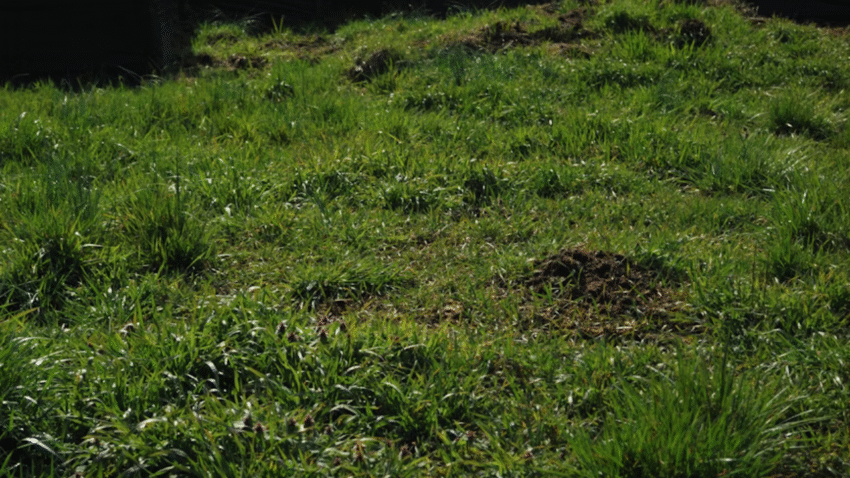Introduction
Want to make your lawn greener and healthier without spending extra money on fertilizers? Learning how to mulch grass clippings for healthier turf is one of the easiest, eco-friendly ways to nourish your lawn naturally. Mulching returns valuable nutrients to your soil, saves time and effort, and helps you grow thick, resilient grass. In this guide, you’ll discover why grass cycling is so effective, how to do it correctly, and common mistakes to avoid—so you can say goodbye to bagging and hello to a lush, self-sustaining lawn.
Why Mulching Grass Clippings Matters for a Healthy Lawn
Mulching grass clippings—also called grass cycling—is the practice of leaving the clippings on your lawn instead of bagging or raking them. As the clippings decompose, they release essential nutrients like nitrogen, potassium, and phosphorus back into the soil. This natural process feeds your turf, reduces the need for synthetic fertilizers, and improves soil structure over time.
When you mulch properly, the clippings act like a slow-release fertilizer and a natural mulch layer. They help retain soil moisture, suppress weeds, and encourage beneficial microorganisms. Unlike common myths, mulched clippings won’t contribute to thatch buildup if you mow correctly and maintain a healthy lawn. Overall, mulching is a simple, sustainable habit that saves money, reduces yard waste, and keeps your grass looking its best.
Step-by-Step Guide to Mulch Grass Clippings
1. Use a Mulching Mower or Mulching Blade
To mulch grass clippings effectively, you need the right equipment. A mulching mower or a regular mower fitted with a mulching blade is designed to cut grass into smaller pieces and redistribute them evenly back onto the lawn.
If your mower has a side discharge or bagging option, switch it to mulch mode. Check that your blade is sharp to make clean cuts, which helps clippings decompose faster.
2. Mow Frequently and Follow the One-Third Rule
Mow regularly to avoid cutting too much at once. The golden rule: never remove more than one-third of the grass blade height in a single mow. This keeps clippings small and prevents clumping, which can smother your grass.
During peak growing seasons, you might need to mow once a week or even twice a week for fast-growing grass types. Adjust your mowing schedule to match growth rates.
3. Mow When Grass is Dry
Wet grass clumps together, making mulching less effective and leaving messy piles that can block sunlight and airflow. Mow when your lawn is dry to ensure an even cut and finer clippings that decompose quickly.
4. Leave Clippings Evenly Spread
As you mow, check that the clippings are distributed evenly. If you notice clumps or piles forming, run over them again with your mower to break them up. Light, fine clippings should filter down into the canopy and reach the soil surface, where they can decompose naturally.
5. Keep Mower Blades Sharp
Sharp blades make cleaner cuts, producing smaller clippings that break down faster. Dull blades tear grass, leading to ragged edges and larger, slower-decomposing clippings.
Inspect your mower blades every few weeks during mowing season, and sharpen or replace them as needed.
6. Adjust Mowing Height Seasonally
For effective mulching, adjust your mowing height based on your grass type and season. Taller grass shades the soil, retains moisture, and hides clippings better.
In hot weather, raise your mower deck by half an inch to help protect roots from heat stress and reduce water evaporation.
7. Don’t Over-Fertilize
Since mulched grass clippings return nutrients to the soil, you may not need as much additional fertilizer. Monitor your lawn’s health, and test your soil if needed. Reducing synthetic fertilizer use saves money and prevents nutrient runoff into waterways.
Common Mistakes to Avoid
Mistake #1: Mowing Infrequently
Solution: Stick to a regular mowing schedule to keep clippings short. Tall grass creates long clippings that clump together, smother your turf, and decompose slowly.
Mistake #2: Using a Dull Blade
Solution: Dull blades create rough, torn clippings that dry out and take longer to break down. Sharpen blades at least once a season—more often if you mow frequently.
Mistake #3: Mowing Wet Grass
Solution: Always mow when the grass is dry. Wet clippings form dense mats that block sunlight and can damage your lawn underneath.
Mistake #4: Ignoring Clumps
Solution: If you see clumps forming, run your mower over them again or use a rake to spread them out. Leaving piles can suffocate grass and encourage disease.
Mistake #5: Not Adjusting Fertilizer Use
Solution: Take advantage of the nutrients your clippings provide! Reduce synthetic fertilizers gradually to avoid over-fertilizing, which can burn your lawn and waste money.
Extra Lawn Care Tips & Hacks
✅ Aerate Your Lawn: Aerating once or twice a year allows clippings to decompose faster by improving airflow and soil structure. It also boosts root growth and overall turf health.
✅ Use Clippings as Garden Mulch: Extra clippings can be added to garden beds, compost piles, or around shrubs and trees. Just be sure they’re spread thinly to prevent matting.
✅ Don’t Miss Our Related Guide: Read our step-by-step guide on sharpening your mower blades to keep your cuts clean and your mulching efficient!
Conclusion
Mulching grass clippings is one of the easiest ways to create a self-sustaining, lush lawn that stays green and healthy all season long. By mowing often, keeping your blades sharp, and following the one-third rule, you’ll naturally fertilize your turf and reduce yard waste—saving time, money, and effort.
Remember: the key is consistency and proper technique. Keep your mower in good shape, adjust your mowing height seasonally, and enjoy the benefits of a stronger, more resilient lawn. Bookmark this guide and start grass cycling today—your turf (and your wallet) will thank you!
